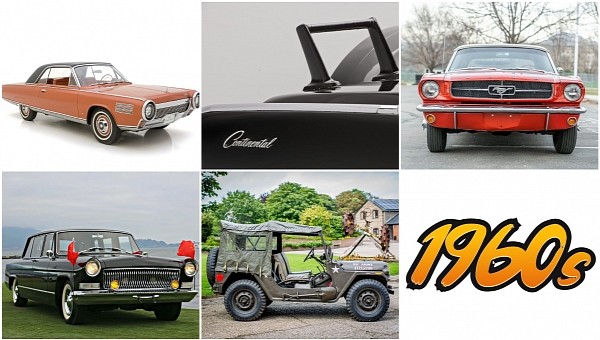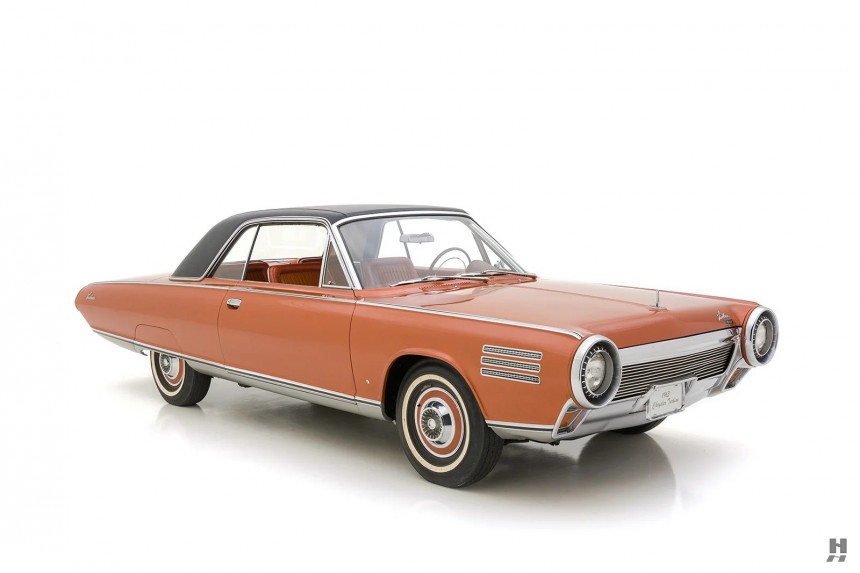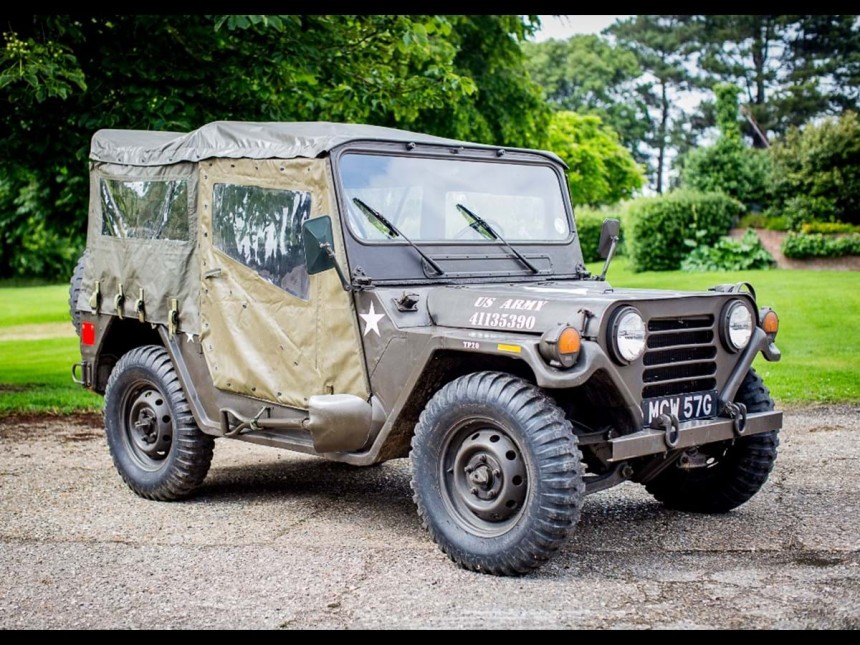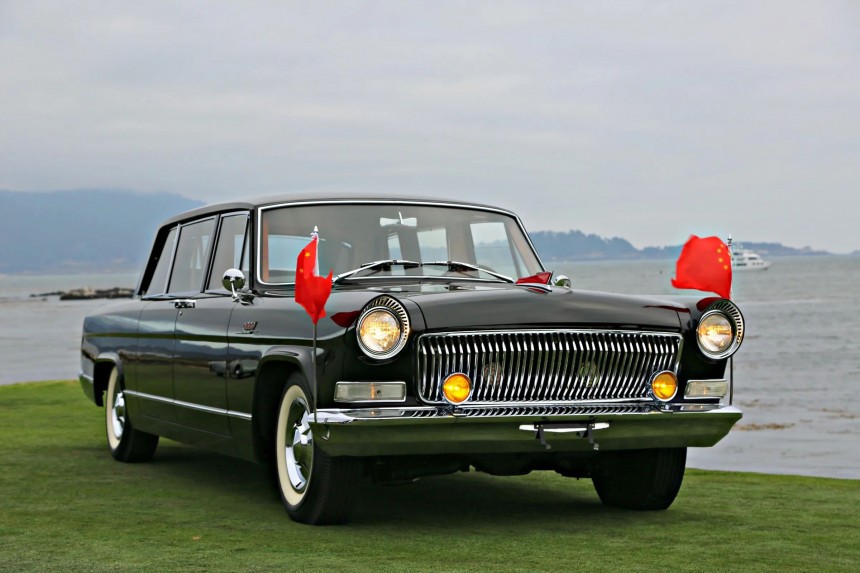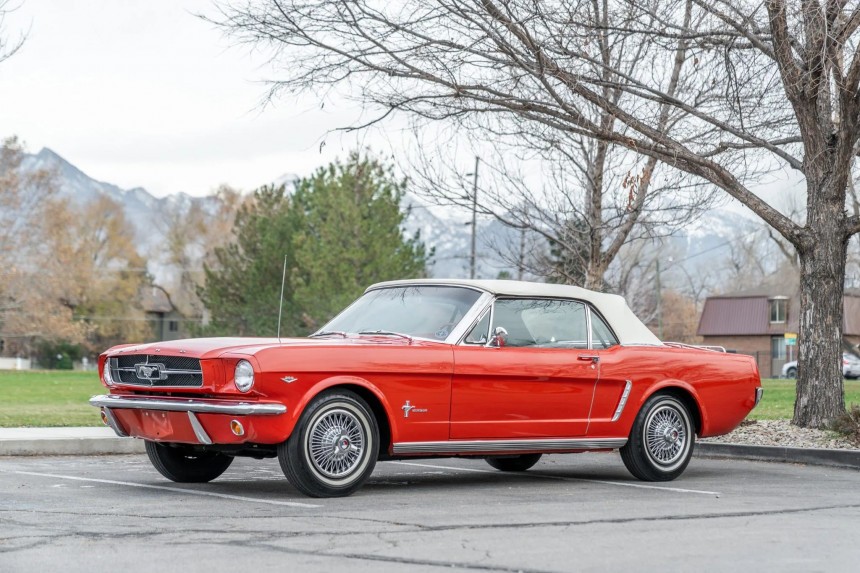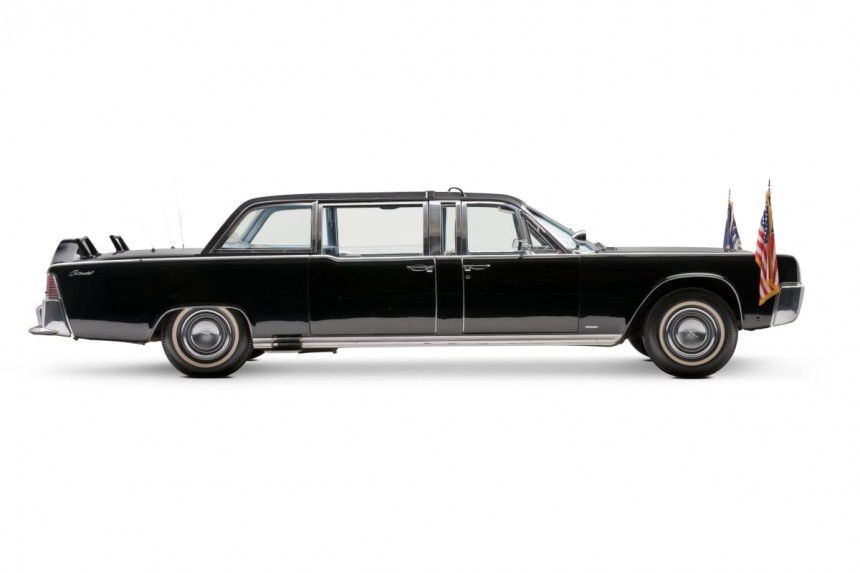Woodstock, the Detroit Riots, baby boomers, JFK’s New Frontier and LBJ’s Great Society, the first human beings to walk on the Moon, Spider-Man’s debut, and many conflictual situations between the democratic West and communist East. All of them define the polarizing 60s.
A period of great change for everyone, the seventh decade of the 20th century is referred to as the Swinging Sixties in the United Kingdom. Other countries weren’t as lucky despite western influence, with South Vietnam (then called the Republic of Vietnam) coming to mind.
British rock band The Who formed in the 60s as well, and Beatlemania crossed the big blue pond we call the Atlantic Ocean with the group’s televised performance on The Ed Sullivan Show. No fewer than 73 million people tuned in on February 9th, 1964, to watch the British quartet rock its way into America’s heart and mind.
But what if we distill the 1960s into five cars? Hard though it may be at first glance, it’s pretty straightforward for an enthusiast of all things four wheels. That being said, let’s kick off the countdown with the only experimental vehicle that made our list.
Five prototypes and 50 examples of the Chrysler Turbine Car were produced from 1962 to 1964. The Ghia-bodied coupe was unlike anything else on the road, not for the way it looks but for the gas turbine that runs on a variety of dinosaur juices to the detriment of fuel economy.
The reason the third-largest automaker of the Big Three in Detroit experimented with gas turbines instead of perfecting the piston engine is rather simple. Chrysler wanted to determine whether the American public was open to such a contraption, especially in the 1960s when the jet age went commercial due to the Boeing 707.
Retired in 1979, the Seven-Oh-Seven airliner is Boeing’s first jetliner. It’s the airplane that revolutionized the airline industry as we know it nowadays, with the iconic 707 paving the way for the wide-body 747 jumbo jet.
With more than 100,000 units manufactured from 1959 through 1988, the M151 quarter-ton 4x4 utility truck is best described as ubiquitous. Produced by Ford, Kaiser, and even AM General, the Humvee’s predecessor is ingrained in the public consciousness as the vehicle that helped America intervene in way too many places where it was not supposed to duke it out with the “bad guys.”
Vietnam is the perfect example in this regard, with America advocating for democracy in South Vietnam despite Ngo Dinh Diem and his cronies being more authoritarian in their ways than a liberal democracy is supposed to be. The United States didn’t need to intervene on the French Republic’s behalf to contain the spread of communism. Using napalm on civilian targets (remember Phan Thi Kim Phuc, a.k.a. napalm girl?) clearly isn’t a good way of spreading democracy either.
The biggest issue of the administrations that fueled the Vietnam War is pretty obvious. All turned a blind eye to what the Vietnamese people wanted, both northern and southern Vietnamese, namely a country to call their own after so much French colonialism. Not democracy, not communism, but freedom from foreign intervention.
Reminiscent of the Chrysler Imperial from the 1950s, the Hongqi CA770 ran between 1966 and 1981 as the ride of choice for Chairman Mao and the hideously underrated Deng Xiaoping. Although Mao Zedong’s face is printed on every single renminbi banknote, the People’s Republic of China became the world’s second-largest economy thanks to the numerous reforms of Xiaoping.
Mao’s reforms, on the other hand, are best described as failures. China of the 1960s is China of the Cultural Revolution, a very execrable sociopolitical movement that spanned from 1966 through 1976. Officially dubbed the Great Proletarian Revolution, the movement failed to achieve its most important goals. Totally unnecessarily, 1.5 to 2 million people died because of this movement.
Xiaoping had been purged twice during the Cultural Revolution, but as fate would have it, he outmaneuvered Hua Guofeng with the help of Enlai’s faction to become the paramount leader of the People’s Republic of China. Although the PRC is anything but a nice place to live in as of February 2023, imagine how it would be had the hardliner Guofeng become paramount leader in 1978.
In the aftermath of World War II, returning GIs got a taste for European sports cars. America didn’t quite get the hang of it, not even with the introduction of the first-generation Chevrolet Corvette. But America did have a car genre to call its own. The muscle car is believed to have originated in 1949 with the 303-ci Rocket V8 of the full-sized Oldsmobile 98 and lighter Oldsmobile 88.
The pony car democratized performance on a wider scale than the muscle car did, with the Mustang leading the way. Affordable, pretty, and easy to manufacture thanks to its Falcon roots, the first-generation Mustang sold more than 400,000 examples in the first year alone.
For the 1964 model year, the Blue Oval listed no fewer than four powertrain choices in the sales brochure of the Mustang, starting with the 170-ci Thriftpower I6 and topping with a 289-ci HiPo V8. The most performance-oriented small block was rated at 271 horsepower at 6,000 rpm and 312 pound-feet (423 Nm) at 3,400 rpm.
If one were to pick the most far-reaching assassinations of the 20th century, Archduke Franz Ferdinand would likely be their first choice, as it gave Austria-Hungary the perfect excuse to kickstart World War I by invading Serbia. The second choice would be John Fitzgerald Kennedy, shot by former marine Lee Harvey Oswald.
November 22nd, 2023, will mark 60 years since JFK lost his life as he rode in a motorcade through Dallas. The car John F. Kennedy was shot in was a 1961 model year Lincoln Continental presidential limousine customized by Hess & Eisenhardt of Cincinnati as a parade vehicle.
Rebuilt with a metal roof, plated with titanium armor, and repainted black as opposed to the original midnight blue, chassis number 1Y86H405950 returned to service during LBJ’s tenure (November 1963 – January 1969). It remained in service with the White House until 1977. The 21-foot-long (6.4-meter-long) luxobarge is currently on display at the Henry Ford Museum in Dearborn.
British rock band The Who formed in the 60s as well, and Beatlemania crossed the big blue pond we call the Atlantic Ocean with the group’s televised performance on The Ed Sullivan Show. No fewer than 73 million people tuned in on February 9th, 1964, to watch the British quartet rock its way into America’s heart and mind.
But what if we distill the 1960s into five cars? Hard though it may be at first glance, it’s pretty straightforward for an enthusiast of all things four wheels. That being said, let’s kick off the countdown with the only experimental vehicle that made our list.
Chrysler Turbine Car – The Jet Age Going Mainstream
The reason the third-largest automaker of the Big Three in Detroit experimented with gas turbines instead of perfecting the piston engine is rather simple. Chrysler wanted to determine whether the American public was open to such a contraption, especially in the 1960s when the jet age went commercial due to the Boeing 707.
Retired in 1979, the Seven-Oh-Seven airliner is Boeing’s first jetliner. It’s the airplane that revolutionized the airline industry as we know it nowadays, with the iconic 707 paving the way for the wide-body 747 jumbo jet.
M151 MUTT – American Interventionism
Vietnam is the perfect example in this regard, with America advocating for democracy in South Vietnam despite Ngo Dinh Diem and his cronies being more authoritarian in their ways than a liberal democracy is supposed to be. The United States didn’t need to intervene on the French Republic’s behalf to contain the spread of communism. Using napalm on civilian targets (remember Phan Thi Kim Phuc, a.k.a. napalm girl?) clearly isn’t a good way of spreading democracy either.
The biggest issue of the administrations that fueled the Vietnam War is pretty obvious. All turned a blind eye to what the Vietnamese people wanted, both northern and southern Vietnamese, namely a country to call their own after so much French colonialism. Not democracy, not communism, but freedom from foreign intervention.
Hongqi CA770 – Mao’s Cultural Revolution
Mao’s reforms, on the other hand, are best described as failures. China of the 1960s is China of the Cultural Revolution, a very execrable sociopolitical movement that spanned from 1966 through 1976. Officially dubbed the Great Proletarian Revolution, the movement failed to achieve its most important goals. Totally unnecessarily, 1.5 to 2 million people died because of this movement.
Xiaoping had been purged twice during the Cultural Revolution, but as fate would have it, he outmaneuvered Hua Guofeng with the help of Enlai’s faction to become the paramount leader of the People’s Republic of China. Although the PRC is anything but a nice place to live in as of February 2023, imagine how it would be had the hardliner Guofeng become paramount leader in 1978.
Ford Mustang – Performance Democratized
The pony car democratized performance on a wider scale than the muscle car did, with the Mustang leading the way. Affordable, pretty, and easy to manufacture thanks to its Falcon roots, the first-generation Mustang sold more than 400,000 examples in the first year alone.
For the 1964 model year, the Blue Oval listed no fewer than four powertrain choices in the sales brochure of the Mustang, starting with the 170-ci Thriftpower I6 and topping with a 289-ci HiPo V8. The most performance-oriented small block was rated at 271 horsepower at 6,000 rpm and 312 pound-feet (423 Nm) at 3,400 rpm.
1961 Lincoln Continental – The Assassination of JFK
November 22nd, 2023, will mark 60 years since JFK lost his life as he rode in a motorcade through Dallas. The car John F. Kennedy was shot in was a 1961 model year Lincoln Continental presidential limousine customized by Hess & Eisenhardt of Cincinnati as a parade vehicle.
Rebuilt with a metal roof, plated with titanium armor, and repainted black as opposed to the original midnight blue, chassis number 1Y86H405950 returned to service during LBJ’s tenure (November 1963 – January 1969). It remained in service with the White House until 1977. The 21-foot-long (6.4-meter-long) luxobarge is currently on display at the Henry Ford Museum in Dearborn.
